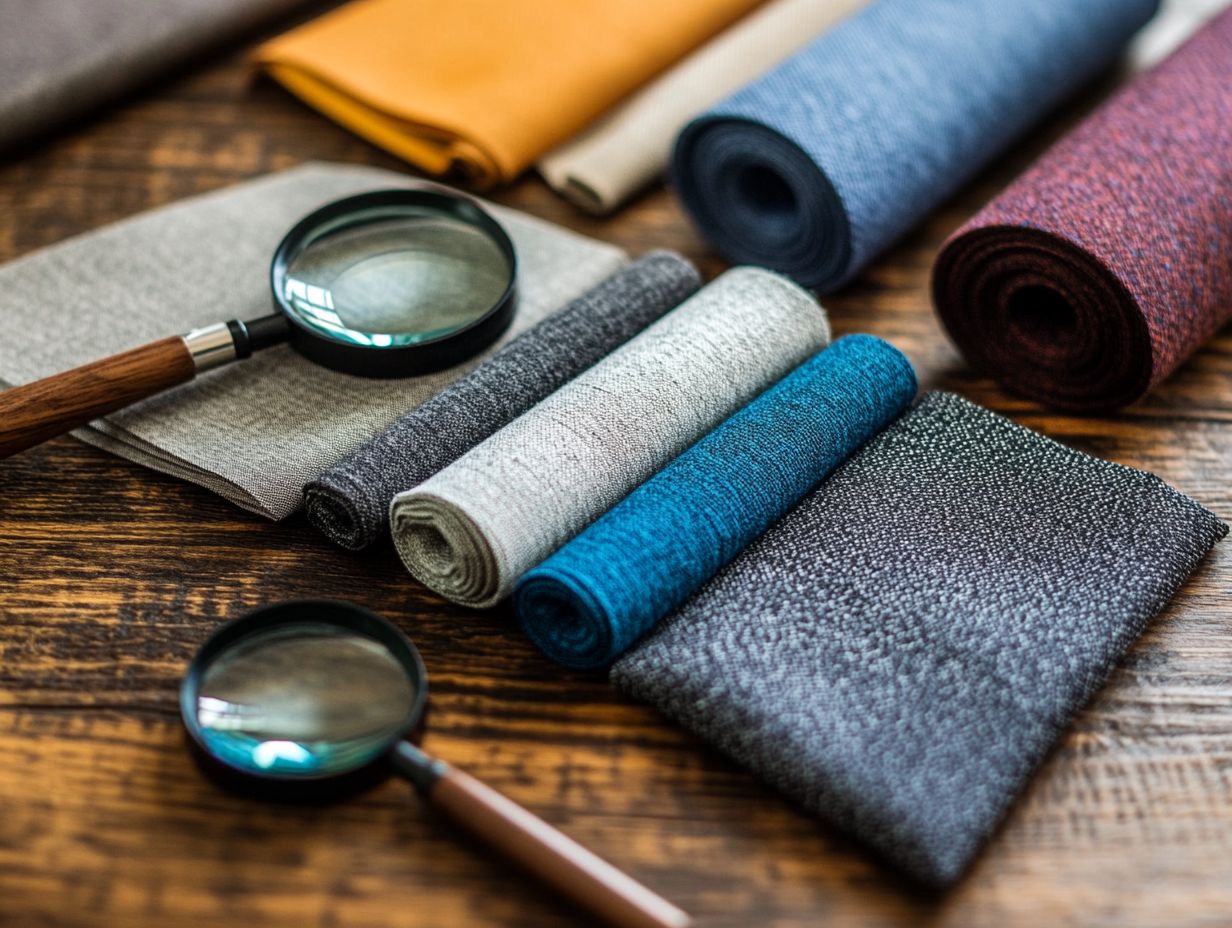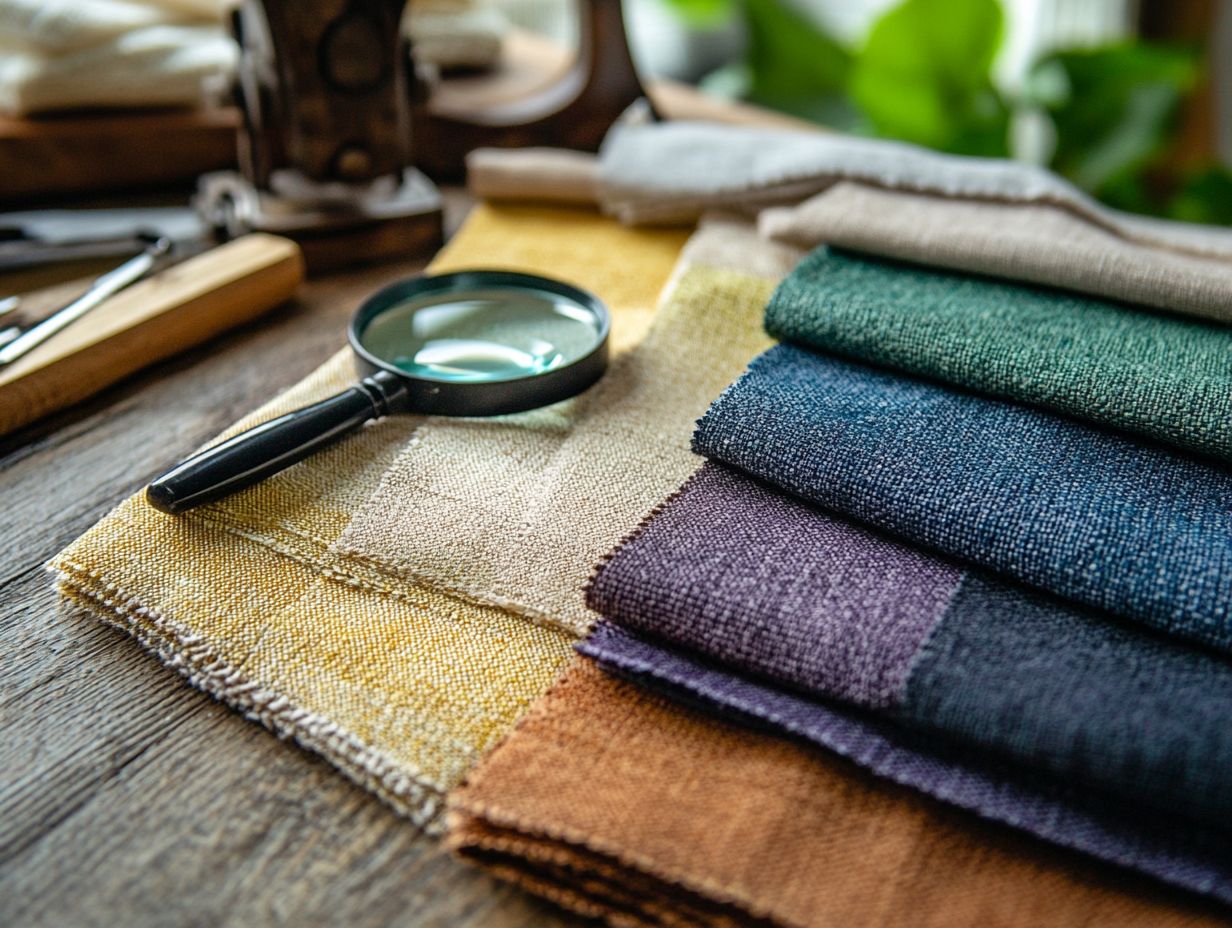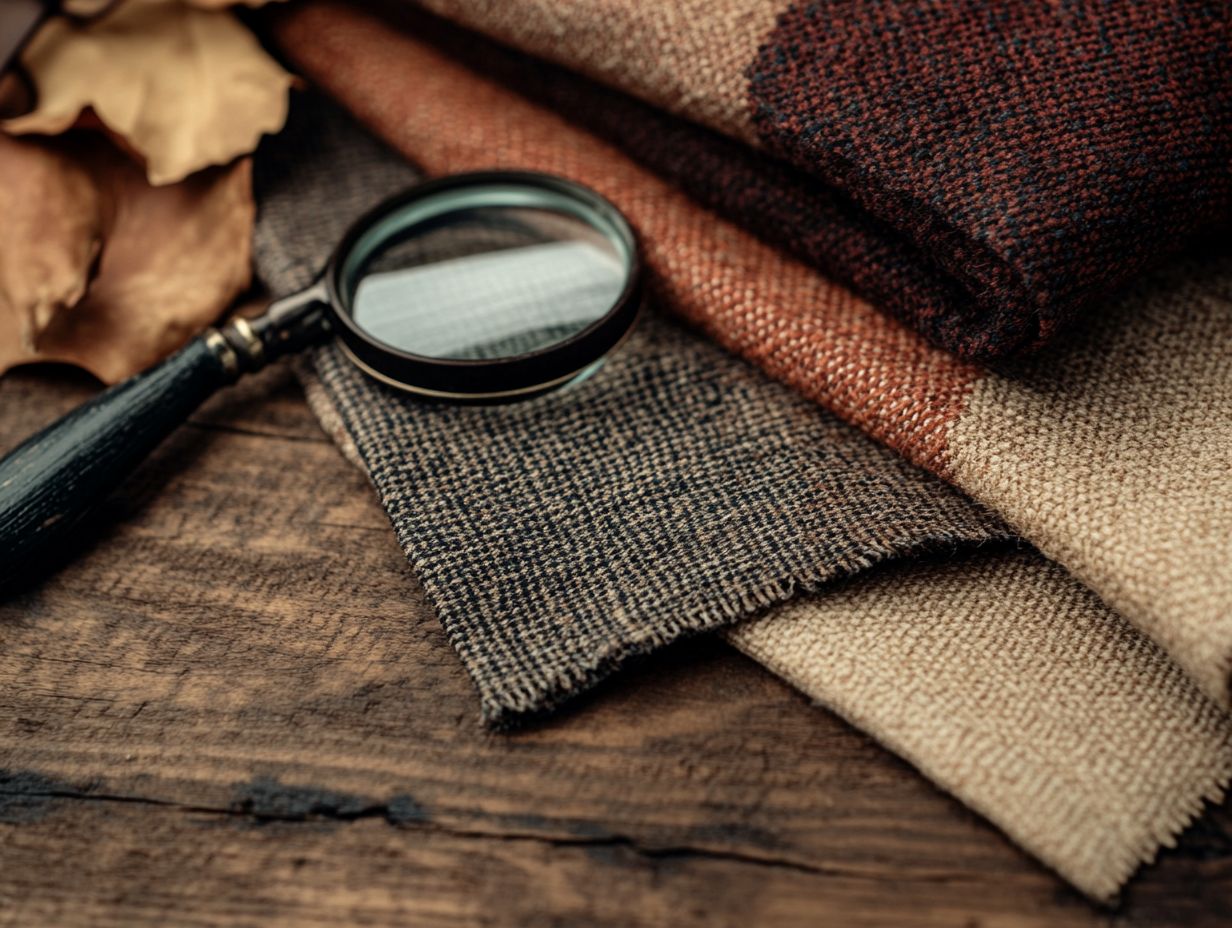What to Know About Clothing Quality?
When it comes to clothing, quality is the game changer. Understanding what defines high-quality garments can elevate your wardrobe and enhance your personal style for years to come.
This article delves into the key factors that influence clothing quality, covering everything from materials and construction to the unmistakable signs of excellence. You ll also find practical tips on how to shop for quality pieces and maintain them, ensuring they stand the test of time.
Wearing quality clothes not only makes you look great but also feels amazing! Explore how to make informed choices that will elevate your fashion game.
Contents
- Key Takeaways:
- Understanding Clothing Quality
- Factors that Affect Clothing Quality
- Signs of High-Quality Clothing
- How to Shop for Quality Clothing
- Maintaining Quality Clothing
- The Importance of Quality Clothing
- Frequently Asked Questions
- What should I know about clothing quality?
- What factors determine clothing quality, and how can we spot high-quality items?
- How can I tell if a garment is of good quality, and what should I look out for?
- Why is clothing quality important, especially when considering wardrobe investment?
- Is it worth investing in higher quality clothing, and how do different clothing companies contribute to this?
- What are some red flags for low quality clothing, and how can I make informed decisions?
- How can I maintain the quality of my clothing, and what practices should I adopt?
Key Takeaways:

- Quality clothing is defined by its materials and construction, not just its brand or price.
- Key indicators of quality include durable fabrics, strong stitching, and attention to detail.
- To shop for quality clothing, look for natural fabrics, inspect stitching and hardware, and consider the garment’s longevity.
Understanding Clothing Quality
Understanding clothing quality goes beyond simply admiring beautiful prints; it requires a discerning eye for apparel that reflects superior craftsmanship and durability. When you choose high-quality garments, you’re investing in premium materials that not only feel incredible but also outlast clothes made quickly and cheaply.
To appreciate the artistry behind well-crafted pieces, delve into aspects like material composition, fabric weight, and overall design. Cultivating an understanding of these elements ensures that your wardrobe not only keeps you comfortable but also maintains your style for years to come.
Defining Quality in Clothing
Defining quality in clothing revolves around core principles, particularly the selection of high-quality materials that ensure comfort, durability, and style.
To truly appreciate superior apparel, consider factors like the type of fabric and craftsmanship involved. Natural fibers like organic cotton or merino wool enhance breathability and comfort, making them ideal choices for discerning shoppers.
Brands like Patagonia emphasize sustainable sourcing, offering garments built to withstand outdoor adventures while promoting environmental responsibility. Ralph Lauren epitomizes elegance with fine craftsmanship, producing timeless pieces that exemplify luxury investments that elevate any wardrobe.
By understanding these nuances, you can select clothing that looks good and feels right, ensuring a wardrobe that reflects your taste and values.
Factors that Affect Clothing Quality
Numerous factors play a critical role in determining clothing quality, from material composition to the precision of design and construction. When you invest in apparel, consider how each element contributes to the garment’s durability and aesthetic appeal.
Materials and Construction
The materials and construction of clothing are crucial in determining overall quality, with premium fabrics like cotton and eco-friendly options like Tencel standing out in the marketplace.
In recent years, the debate between natural and synthetic fibers has gained momentum. Natural fibers such as linen and wool are celebrated for their breathability and comfort, while synthetic materials like polyester and nylon are known for their durability and wrinkle resistance.
Eco-friendly alternatives like Tencel, sourced from sustainably harvested wood pulp, offer exceptional softness and a reduced environmental footprint due to their biodegradable properties. By choosing clothing made from these sustainable materials, you elevate your comfort and positively impact the planet, championing a more responsible fashion industry.
Make smart choices now to elevate your fashion game!
Signs of High-Quality Clothing

Recognizing the signs of high-quality clothing is essential for smart shopping. Key characteristics can help you distinguish expertly crafted garments from fast fashion items.
Key Indicators of Quality
Key indicators of quality in clothing reveal themselves when you examine the seams, consider the materials, and evaluate the overall craftsmanship.
In addition to these foundational elements, pay close attention to the quality of the stitching. Tight, even stitches are a hallmark of durability, while loose threads may suggest future unraveling. The feel of the fabric is equally crucial. High-quality materials often boast a luxurious texture that enhances comfort and elevates the overall aesthetic of the garment.
Don t overlook the finishing details. Neatly hemmed edges and functional buttons can dramatically influence both the longevity and style of the piece. Don t rush! Assess these signs closely to make the best choice, helping you resist the allure of impulse purchases that might lead to regret later on.
How to Shop for Quality Clothing
Shopping for quality clothing can be a truly rewarding experience, especially when you arm yourself with the right tips to discover and assess exceptional pieces.
Tips for Finding and Evaluating Quality Pieces
To successfully discover and evaluate quality clothing pieces, begin by researching brands that prioritize sustainable practices and high-quality materials. This approach enables you to make informed decisions and support companies that resonate with your values.
Brands like Levi Strauss & Co. and J Crew have built a strong reputation for producing durable garments made from ethically sourced materials. Reputation is key when assessing clothing quality. Exploring a brand’s history and commitment to sustainability offers valuable insights.
Examine customer reviews to see others’ experiences, guiding you in determining whether the items align with your expectations for style and longevity.
Maintaining Quality Clothing
Maintaining quality clothing is just as important as the initial purchase. The best practices for preserving that quality encompass meticulous care and attention to detail.
Best Practices for Preserving Quality

Implementing best practices for preserving clothing quality demands your care and a clear understanding of garment care.
Every garment, from delicate silks to sturdy denim, has specific requirements that significantly extend its lifespan. Regularly checking labels for washing instructions is not just advisable; it s important. This simple step helps you avoid mishaps that could lead to fading or shrinkage.
Separating items by color and fabric type on laundry day can dramatically reduce the risk of damage. When it comes to ironing, using the correct heat setting is essential. This practice ensures your clothes maintain their intended look without any unsightly burns or creases.
Proper storage techniques, such as using breathable garment bags or padded hangers, can safeguard your cherished pieces from unnecessary wear. By treating each item with the care it deserves, you can ensure that it remains stylish and usable for years to come.
The Importance of Quality Clothing
The significance of quality clothing transcends mere personal style. It brings substantial advantages not only for you but also for the environment. Investing in well-crafted garments enhances your wardrobe while promoting sustainability and reducing waste.
Benefits for You and the Environment
Choosing quality clothing offers you a multitude of benefits that can significantly elevate your lifestyle while also being kind to the environment. When you invest in higher-quality garments, you’ll discover that they not only provide exceptional comfort but also stand the test of time. This dramatically reduces the need for frequent replacements.
This longevity fosters a more sustainable wardrobe. Durable clothing means you shop less often, which ultimately leads to reduced waste and a lower carbon footprint the total amount of greenhouse gases produced directly or indirectly by activities. The emergence of eco-friendly materials, like organic cotton and recycled fabrics, along with the dedication of various clothing brands to sustainable production practices, enables you to make fashion choices that are considerate of the planet.
By prioritizing these elements, you can cultivate a lifestyle that reflects your values of quality and environmental stewardship.
Frequently Asked Questions
What should I know about clothing quality?
Clothing quality refers to the overall durability, construction, and design of a garment. It can greatly affect the lifespan and functionality of a piece of clothing. To truly appreciate clothing quality, it’s essential to trust your body when trying on garments. Here are some frequently asked questions about clothing quality.
What factors determine clothing quality, and how can we spot high-quality items?

Several factors determine clothing quality, including the type and quality of fabric, construction techniques, and attention to detail in design. Higher quality clothing is made with better materials and more precise construction methods.
How can I tell if a garment is of good quality, and what should I look out for?
There are a few things to look for when determining the quality of a garment. Check the stitching and seams if they are straight and secure, it’s a good sign. Also, feel the fabric; higher quality materials will feel softer and more substantial. Lastly, examine the details and finishes well-made clothing will have neat and clean finishes.
Why is clothing quality important, especially when considering wardrobe investment?
Clothing quality is important for several reasons. It can affect how long a garment will last and how well it will hold up over time. Quality clothing is also more comfortable and can often look better, as it is made with better materials and construction techniques.
Is it worth investing in higher quality clothing, and how do different clothing companies contribute to this?
Investing in higher quality clothing can be worth it in the long run. While it may cost more upfront, well-made clothing can last longer, saving you money in the long term. It also offers greater comfort and confidence, as high quality clothing tends to fit and feel better.
What are some red flags for low quality clothing, and how can I make informed decisions?
There are a few red flags to watch out for when it comes to low quality clothing. These include poor stitching and seams, thin or cheap-feeling fabric, and uneven or messy finishes. Loose threads and inconsistent sizing are also signs of lower quality clothing.
How can I maintain the quality of my clothing, and what practices should I adopt?
To maintain the quality of your clothing, it’s important to follow the care instructions on the label. This may include washing on a gentle cycle, air drying, or dry cleaning. It’s also essential to store your clothing properly, such as hanging or folding it neatly, to prevent damage and wrinkles.
Discover the impact of your clothing choices today!





